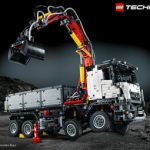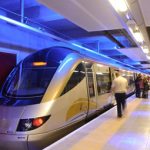A call to stand together
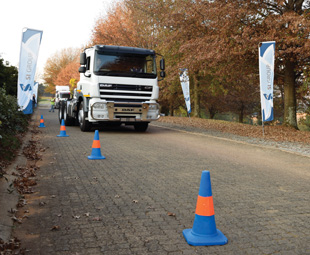
A cloud of worry and uncertainty seemed to hang over the Road Freight Association (RFA) Convention 2015. “The threat to the trucking industry has never been more apparent,” says the Association’s CEO, Sharmini Naidoo. GAVIN MYERS finds out why.
As it does every year, the RFA Convention attracted, as one speaker put it, “the first-world component of our industry” for a few days of networking, lively debate, deliberation, and (of course) golf.
As such, the other component of the industry – that needed to hear the sense behind running professional operations that do not harm the industry – within the confines of the law – were unfortunately not present. (See the box entitled: “Heading in the wrong direction?” for more on this topic.)
Operating within the confines of the law was undoubtedly the most hotly debated topic at the RFA Convention 2015 – thanks to the tightening of these already-limited boundaries. “The lack of professionalism by some operators has cast the road freight industry in a negative light and done a lot to damage the waning credibility of this sector. Comments by the Department of Transport to regulate where it sees fit are very worrying,” said Naidoo.
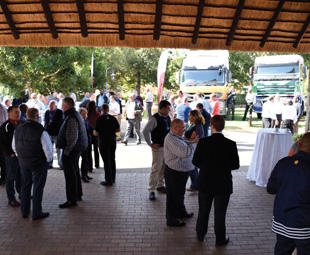 “What more does an already over-regulated industry have to contend with?” she asked. “The need for the industry to stand together to prevent the effects of harmful legislation has never been so great. It’s essential that industry views are taken into account.”
“What more does an already over-regulated industry have to contend with?” she asked. “The need for the industry to stand together to prevent the effects of harmful legislation has never been so great. It’s essential that industry views are taken into account.”
The harmful legislation that tugged most at the strings of the industry representatives who were present, was, undoubtedly, that of the mooted restriction of the driving hours of commercial vehicles over nine tonnes in urban areas.
With the keynote address by Deputy Minister of Transport Sandiswe Chikunga cancelled at the last minute (as Naidoo pointed out: “industry consultation is simply a regulatory process and is not a negotiation”), the organisers improvised in spectacular fashion. This widely despised legislation was shunted into the centre of an impromptu debate. It’s aim was to try to understand why certain parties would be for the legislation.
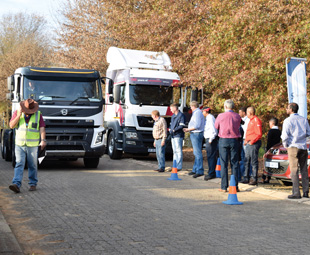 Led by Terry Bantock, group CEO of Buildmax Limited, key delegates were assigned the persona of stakeholders who might see benefit in the restriction of truck driving hours. Garth Bolton, of Cargo Carriers, for example, was required to argue from the perspective of Transnet, while the RFA’s Kevin van der Merwe argued from the point of the Department of Transport.
Led by Terry Bantock, group CEO of Buildmax Limited, key delegates were assigned the persona of stakeholders who might see benefit in the restriction of truck driving hours. Garth Bolton, of Cargo Carriers, for example, was required to argue from the perspective of Transnet, while the RFA’s Kevin van der Merwe argued from the point of the Department of Transport.
The results were, naturally, humorous, but some pertinent facts did come to light. Paul Nordengen from the Centre for Scientific and Industrial Research (CSIR) and economist Mike Schussler pointed out the real dangers.
“Maintenance, driver health, speeding, breakdowns and overloading are the major causes of truck accidents. Banning trucks is not going to address these issues,” Nordengen began. “Up to 200 areas in the country could be affected, and banning trucks in smaller, non-metro areas will not have any benefits. To get around the ban, operators might buy smaller trucks, which will drive up costs and place even more vehicles on the road – worsening safety, congestion and emissions.”
 Schussler said: “At least 33 percent of the time available to deliver goods will be cut, so costs will go up at by at least 55 percent. Labour costs and taxes will also go up. Our logistics costs are already among word’s highest at 13 percent of gross domestic product, of which transport makes up about seven percent.
Schussler said: “At least 33 percent of the time available to deliver goods will be cut, so costs will go up at by at least 55 percent. Labour costs and taxes will also go up. Our logistics costs are already among word’s highest at 13 percent of gross domestic product, of which transport makes up about seven percent.
“If that increases to ten percent it’ll have a very similar effect to that of the recent electricity increases. South Africa will become less competitive; the import bill will go up and export revenue will go down. The current-account deficit will get bigger. Industry profit levels will drop and many operators will close. It’s economically unworkable.”
It was further pointed out by Hugo Pienaar, of Cliffe Decker Hofmeyer, that drivers will work 35 hours in a five-day work week without a loss of pay. “That will not be sustainable. More will qualify for night-shift allowance and overtime, and probably demand a danger allowance as well.”
 Bantock suggests the RFA look for lobbying partners. “To lobby effectively you need to have your facts and understand the full implications. There may be companies that have read the legislation, done their homework and invested their own time and money in conducting studies. We should be putting through one strong voice.”
Bantock suggests the RFA look for lobbying partners. “To lobby effectively you need to have your facts and understand the full implications. There may be companies that have read the legislation, done their homework and invested their own time and money in conducting studies. We should be putting through one strong voice.”
Unfortunately, the cost increases being experienced by the industry don’t end there. A seemingly off-topic presentation was given by Doug Kuni, an independent power consultant, about the impacts of the power crisis on the road freight industry. However, it soon became clear that Eskom’s continuing struggle to keep the lights on is likely to affect the industry in more ways than just an increase in traffic congestion, due to the effect load shedding has on traffic lights.
“At the moment we are burning diesel to keep the lights on. Eskom has about 2 000 MW of diesel gas turbines at the moment and the Department of Energy has just commissioned another 1 000 MW. Around 140 t of diesel per hour is needed to generate 1 000 MW … That’s a helluva lot of diesel!
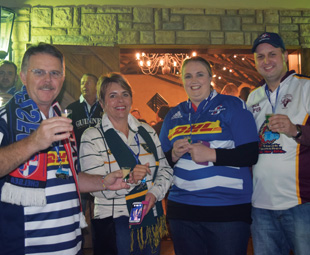 “Incidentally, Botswana, too, is currently burning diesel, which comes from South Africa. If we and our neighbours continue to burn diesel at these volumes, and, one of these days, enough people put in private emergency gensets, we run the risk of bottlenecks in diesel supply,” he warns.
“Incidentally, Botswana, too, is currently burning diesel, which comes from South Africa. If we and our neighbours continue to burn diesel at these volumes, and, one of these days, enough people put in private emergency gensets, we run the risk of bottlenecks in diesel supply,” he warns.
While we feel these were certainly the most pressing current issues to be brought out at the Convention, space permitting we would cover them all – including a BBBEE sector code update and mega trends affecting the future of the logistics industry. Happily, the RFA has made these presentations available on its website.
Ludicrous legislation
E-tolls, driving hours, consignee/consignor … New legislation is top of mind within the transport industry at the moment. The waters surrounding the consignee/consignor legislation, effective since January 1, seem to be particularly muddied.
 Led by Cliffe Decker Hofmeyer’s Hugo Pienaar, a panel discussion about this legislation sought to clear the waters a bit. “It’s already been said that this is among the worst pieces of legislation to be introduced,” he notes.
Led by Cliffe Decker Hofmeyer’s Hugo Pienaar, a panel discussion about this legislation sought to clear the waters a bit. “It’s already been said that this is among the worst pieces of legislation to be introduced,” he notes.
Peter Lamb, associate: Norton Rose Fulbright; Kevin van der Merwe, Abnormal Load Support, RFA; and Fred Abrams, account manager, Price Forbes, shared pertinent points to consider.
In short, a consignor is anybody that has more than a cumulative 500 000 kg cargo transported in a month. Likewise, a consignee is anyone that receives goods in excess of 500 000 kg a month. “The duties on the consignor are breathtaking if one considers the facilities that will be needed. Some of requirements of this Act are completely ludicrous,” says Lamb.
The Act’s reference to insurance brought about a raging debate.
“The insurance provisions are completely unconstitutional. As a private entity you can chose whether or not to insure your risks. The public liability aspect can be easily addressed; it must just be properly drafted. It’s very difficult to comply with this legislation,” continues Lamb.
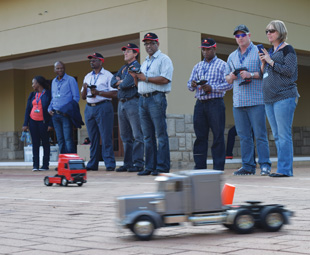 Abrams agrees: “Who is the Act trying to protect? The way I see it, they are trying to protect damage to infrastructure, which can normally be covered by third-party insurance. Who’s going to determine if all these insurance policies are in place and valid? Anyway, if there is any overloading, a goods-in-transit (GIT) policy will not cover you for your loss.
Abrams agrees: “Who is the Act trying to protect? The way I see it, they are trying to protect damage to infrastructure, which can normally be covered by third-party insurance. Who’s going to determine if all these insurance policies are in place and valid? Anyway, if there is any overloading, a goods-in-transit (GIT) policy will not cover you for your loss.
“I don’t know if this is a precursor for having third-party liability for all vehicles going forward, but my suggestion is to do the bare minimum and have a GIT and carrier’s liability policy in place. I don’t know why the insurance comment was put into this legislation. I suggest trying to get it removed.”
Van der Merwe reiterates that prosecution and enforcement of the legislation will be difficult. “This legislation is not designed for day-to-day law enforcement, although you may find the odd, confused traffic officer seeing this as an opportunity to peruse his constitutional right to freedom of economic activity …
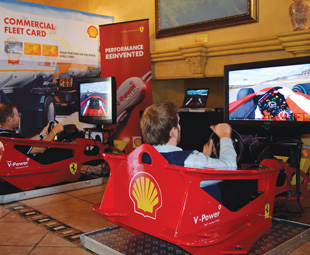 “Of course, this Act does rely on well-trained traffic officers to enforce it, and prosecution will be difficult. They will not know if the operator is transporting something for a consignor who has passed the 500 000 kg mark. Although the current legislation is seriously flawed, an example will eventually be made of a company’s director and parties will start feeling the pressure and probably stop overloading.”
“Of course, this Act does rely on well-trained traffic officers to enforce it, and prosecution will be difficult. They will not know if the operator is transporting something for a consignor who has passed the 500 000 kg mark. Although the current legislation is seriously flawed, an example will eventually be made of a company’s director and parties will start feeling the pressure and probably stop overloading.”
While this legislation was called for by the industry 20 years ago, Pienaar concludes that it must be enforceable and workable. “We intend to address the minister and ask her to withdraw this legislation instead of trying to amend it – it’s virtually impossible to amend.”
Heading in the wrong direction?
The causes and preventions of crashes came under fire this year.
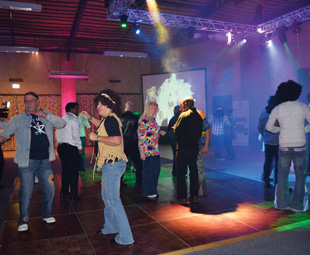 Facilitated by Derek Moe, Con Roux, commercial manager, N3 Toll Concession, spoke within the context of infrastructure, while Gavin Kelly, technical and operations manager, RFA, gave a technical viewpoint.
Facilitated by Derek Moe, Con Roux, commercial manager, N3 Toll Concession, spoke within the context of infrastructure, while Gavin Kelly, technical and operations manager, RFA, gave a technical viewpoint.
They were joined by Johan Jonk of Arrive Alive, who gave a legal perspective, and IBF forensic collision and homicide reconstructionist Stan Bezuidenhout discussed the details of crashes. Patrick O’Leary, publisher and editor of Fleetwatch, spoke about his passion for road safety.
It was clear, however, that the session touched only the tip of the road-safety iceberg. Roux contextualises: “On average, over the last five years there have been 549 crashes a year, just involving trucks, on the N3. That’s around 50 percent of all crashes, though trucks constitute only 35 percent of the traffic.”
Jonk adds that, while the Department of Transport reports around 14 000 road fatalities a year, the Medical  Research Council suggests a figure closer to 17 000. “Last year, the Road Accident Fund wrote up 147 000 claims from people injured in crashes,” he says.
Research Council suggests a figure closer to 17 000. “Last year, the Road Accident Fund wrote up 147 000 claims from people injured in crashes,” he says.
What is to be done? Bezuidenhout suggests South Africa’s culture needs to be fixed. “We have a culture of ‘them and us’ and of boastfulness surrounding dangerous activity. People use the roads based on their personal position rather than their cultural awareness.
“In Canada, a person speeding would stand out like a sore thumb and become culturally identified and shunned for not abiding by the rules.”
With a view to the industry, Kelly notes that operators need to start taking ownership of the issues surrounding the vehicles they put on the road. “An operator should conduct his operations with due care to the safety of the public. There are moves afoot to start holding operators accountable for what happens with their vehicles.”
 O’Leary adds: “They say brakes fail; brakes don’t fail – we fail to maintain them! It’s the operators’ duty to keep their vehicles roadworthy, not that of the driver.”
O’Leary adds: “They say brakes fail; brakes don’t fail – we fail to maintain them! It’s the operators’ duty to keep their vehicles roadworthy, not that of the driver.”
Jonk notes that self-regulation, utilising modern tracking and camera systems, will go a long way to enforcing internal action towards drivers who are seen not obeying the rules of the road. “We have so many tools. We will miss out if we don’t use them.”
With (car and truck) driver fatigue being so prevalent, the question of a roadside fatigue test (according to O’Leary, a system is currently under development) and the use of driver log books were raised.
Of course, traffic law enforcement is perhaps the biggest problem. “Traffic officials are not confident to stop a truck and look beyond licences and a Certificate of Fitness. They are totally untrained and unmotivated,  with no leadership,” says O’Leary.
with no leadership,” says O’Leary.
“We’re dealing with people who don’t know what they’re doing and are not reaching out to those who do. The RFA can push very hard for the creation of a ministry of road safety; it’s a specialised field that must be run by competent road safety professionals. We must be more proactive and aggressive with government,” he continues.
Can it be done? Jonk thinks it can. “In the 1970s, Australia had the same number of road deaths as we do – they reduced them by 67 percent in 20 years. It’s possible, but if we don’t have a unified and combined approach from private and government sectors then we will continue to head into the wrong direction.”

Published by
Focus on Transport
focusmagsa

